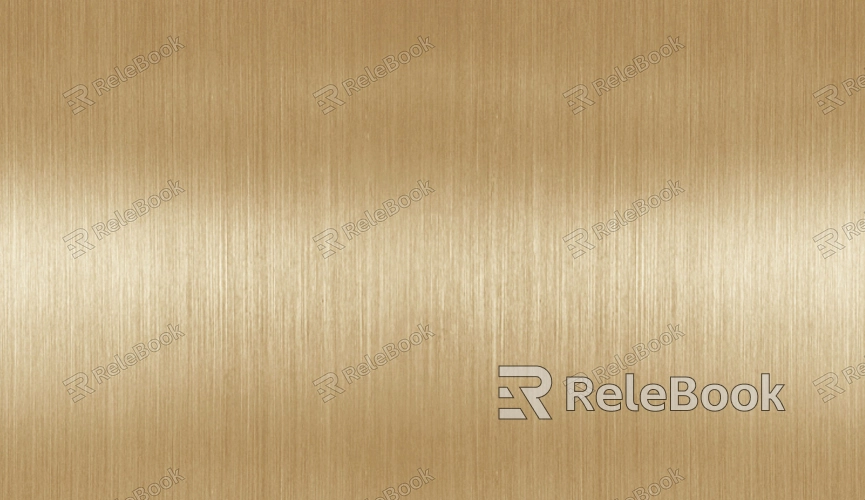How to Smooth Down Textured Metal in Photoshop?
Textured metals, such as rusted, scratched, or worn surfaces, can create a sense of realism, but sometimes these textures can detract from the clean, polished look you want for a project. Whether you're editing a product photograph, refining a design, or creating realistic environments, smoothing textured metal in Photoshop is a skill that can elevate your work. This article will guide you through various methods to smooth down textured metal in Photoshop, ensuring a polished result while maintaining the integrity of the surface's natural appeal.

Identifying the Type of Metal Texture
Before beginning the editing process, it's essential to understand the type of metal texture you're dealing with. Metal surfaces come in many forms—brushed steel, oxidized copper, polished aluminum, and rusted iron, just to name a few. Each texture has distinct characteristics that will affect how you approach smoothing it down.
For instance, brushed metal typically has long, linear textures, while rusted metal is often uneven and rough, requiring different techniques to achieve a smooth finish. Identifying the unique properties of the metal texture will help you decide the right tools and techniques for the job, whether you're looking to remove imperfections or soften the overall appearance.
Preparing Your Image
Before making any edits, it's a good idea to duplicate the original image to preserve the integrity of the source material. In Photoshop, you can do this by right-clicking the image layer and selecting "Duplicate Layer." This way, you can always return to the original if needed.
Once you've duplicated the layer, it's helpful to zoom in on the textured metal area you want to smooth. This will give you better precision when using Photoshop's editing tools. Adjust the canvas size, if necessary, to fit your editing workspace, allowing you to focus on specific areas of the metal texture.

Using the Healing Brush Tool
One of the most powerful tools for smoothing out metal textures in Photoshop is the Healing Brush Tool. This tool helps remove imperfections by blending nearby pixels and can be highly effective for eliminating small dents, scratches, or rust spots on metal surfaces.
To use the Healing Brush Tool effectively:
- Select the Healing Brush Tool from the toolbar (or press J).
- Hold down the Alt key (Option on Mac) to sample a clean area of the texture near the imperfection.
- Carefully paint over the areas with visible scratches or unwanted textures. Photoshop will automatically blend the pixels and smooth out the roughness.
- Adjust the size and hardness of the brush as needed to ensure a seamless transition.
This tool is especially useful for more localized smoothing, such as fixing small nicks or inconsistencies in a polished metal surface.
Utilizing the Clone Stamp Tool for Larger Areas
For larger, more persistent areas of texture, the Clone Stamp Tool is another excellent option. It works by copying pixels from one area and painting them over the target area, allowing you to fill in larger sections of the texture.
To use the Clone Stamp Tool:
- Select the Clone Stamp Tool from the toolbar (or press S).
- Hold down the Alt key (Option on Mac) to sample pixels from a smooth section of the texture.
- Start painting over the rough or uneven areas of the metal surface.
- As with the Healing Brush Tool, adjust the size of the brush to ensure a consistent finish.
The Clone Stamp Tool allows for more control over the smoothing process and can be used to replicate the texture of surrounding areas, making the smoothing less noticeable.
5. Softening Texture with Gaussian Blur
For a more generalized smoothing effect across the entire metal surface, applying a Gaussian Blur can be highly effective. This technique softens harsh details and can give the metal a more polished, subtle look.
Here’s how to use Gaussian Blur:
- Duplicate the image layer to keep a backup.
- Go to Filter > Blur > Gaussian Blur.
- Adjust the Radius slider to control the amount of blur. A small radius is ideal for smoothing rough textures without losing too much detail.
- If the result is too strong, reduce the opacity of the blurred layer or use a layer mask to refine the areas that need smoothing.
While Gaussian Blur can create a more uniform look, it’s essential not to overuse it, as this may cause the metal texture to lose its character and realism.
6. Adjusting the Levels and Curves
Once you’ve smoothed the texture, you may need to fine-tune the lighting and contrast to enhance the smoothness of the metal surface. Photoshop’s Levels and Curves adjustments are powerful tools for modifying the brightness, shadows, and highlights of your image.
To adjust the levels:
- Go to Image > Adjustments > Levels.
- Move the shadow, mid tone, and highlight sliders to refine the contrast and brightness of the image.
For finer control, you can use the Curves adjustment:
- Go to Image > Adjustments > Curves.
- Create points on the curve to adjust specific tonal ranges and refine the smoothness of the texture.
This step helps achieve a polished look by ensuring that the smoothness of the metal texture is complemented by the correct contrast and lighting.
7. Refining with the Smudge Tool
The Smudge Tool is another option for creating smooth transitions between rough areas. This tool pushes pixels around, effectively blending textures in a more organic, fluid way.
To use the Smudge Tool:
- Select the Smudge Tool from the toolbar (or press R).
- Adjust the brush size and strength to your preference.
- Gently drag across the textured areas to blend them with surrounding pixels.
This tool can be particularly useful for creating subtle transitions between areas that need to be smoothed without creating harsh lines or edges.
8. Final Touches: Noise Reduction
Once the metal surface has been smoothed, you may notice some loss of detail or unnatural smoothness. To combat this, you can reintroduce some texture using Photoshop’s Add Noise feature.
Here’s how to do this:
- Select the area where you want to restore some texture.
- Go to Filter > Noise > Add Noise.
- Adjust the amount of noise to your liking, making sure it complements the overall texture of the metal.
Adding noise can help create a more natural look, as it reintroduces a subtle, uniform texture that enhances the realism of the smoothed surface.
Smoothing down textured metal in Photoshop involves a combination of tools and techniques to remove imperfections and create a polished, sleek finish. Whether you are working with rusted iron, brushed steel, or polished aluminum, using tools like the Healing Brush, Clone Stamp, Gaussian Blur, and others will help you achieve a smooth and realistic metal surface. By adjusting the lighting, adding subtle textures, and ensuring a natural blend, you can enhance the appearance of any metal texture with precision and ease.
For those looking to further refine their designs, it’s worth exploring high-quality 3D models and textures to add depth and realism to your projects. You can find a wide variety of 3D models and textures available for download on the Relebook website, where you’ll find resources that can take your design work to the next level.
FAQ
What is the best tool to use for smoothing out small scratches on metal?
The Healing Brush Tool is ideal for small imperfections like scratches. It automatically blends the surrounding pixels to create a seamless repair.
How do I prevent the smoothed metal from looking too artificial?
Use subtle tools like the Smudge Tool and Gaussian Blur to keep the texture looking natural. Additionally, adding a small amount of noise can help maintain a realistic appearance.
Can I smooth down a highly rusted metal surface in Photoshop?
Yes, the Clone Stamp Tool and Healing Brush Tool can effectively remove rust and imperfections. After smoothing, you may want to adjust the lighting and contrast to restore depth to the surface.
Will smoothing a metal texture affect its reflections and highlights?
Smoothing can soften reflections and highlights, so be sure to adjust the contrast and curves after smoothing to retain the shine and reflective quality of the metal.
How can I add a more realistic shine to the smoothed metal?
Adjusting the contrast and using tools like the Dodge and Burn tools can help bring back the shine and highlights, enhancing the realistic appearance of the metal surface.


